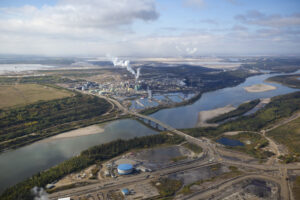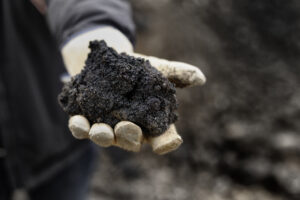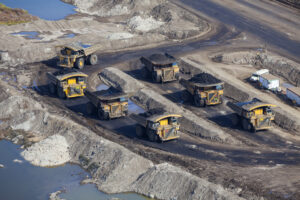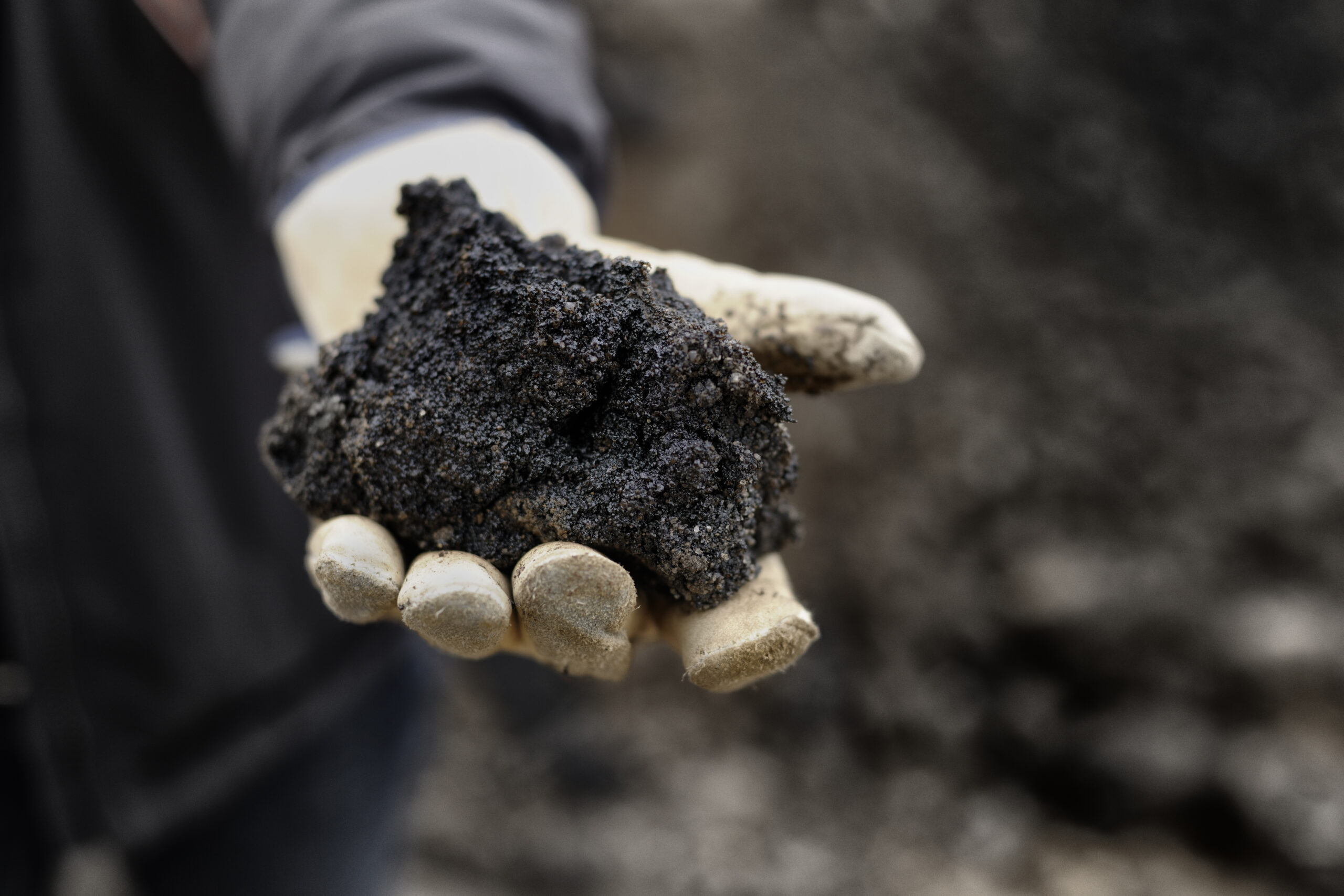The world’s largest reserve of oil presents a tough – yet beatable – challenge for Mesabi® radiators as they face one of the filthiest and most damaging environments for mining machinery.
Alberta, Canada – It’s no secret that Mesabi® radiators can withstand any environment, no matter how harsh. Even Canada’s oil field reserves can’t beat the long-lasting durability of a genuine Mesabi radiator.
Where Alberta’s rich, green forests finally thin out, the land transforms into North American muskegs – murky swamps overgrown with moss and dead vegetation. Here, a naturally occurring mixture of sand, clay, water, and a type of extra heavy oil called bitumen is found in a sprawling deposit roughly the size of Florida. These are the Canadian oil sands.

Once processed, refineries use bitumen to produce fuels such as gasoline, diesel, jet fuel, and other petroleum-based products.
According to the Canadian Association of Petroleum Producers, Canada’s oil sands (also referred to as tar sands) are the largest deposit of crude oil in the world. The Athabasca deposit in Alberta is among the largest and most technologically developed production areas with other locations at Peace River Area and Cold Lake Area.
Mining for and processing the oil sands are challenging, to say the least. This abrasive environment shows no mercy. It wears out moving parts and tears machines apart if not properly maintained. Thankfully, the adaptable and durable design of a Mesabi radiator can withstand the harshest of conditions, outlasting a machine’s life cycle by up to four times compared to standard radiators.
“The oil sands are probably the hardest material to work with, ever,” said Jerry Jensen, Account Manager in Western Canada at L&M Radiator. “Mesabi radiators are present on the majority of machines in the top oil sand fields in Canada. I don’t think that there’s a mine site in Canada that doesn’t have at least one Mesabi, and most of them have multiple units, especially on the larger equipment.”
Dancing with Damaging Debris
Oil sands require a specific process of extraction – after mining the oil heavy sands in large open pits, the bitumen is separated from the sand and clay using high temperature water. The water is then pumped into tailing ponds to allow the sand to settle and any residual oil to separate out. This is a lengthy process when compared to drilling or other means of extraction. What’s left of the sand is shockingly white…something one might expect to see on a beach in the Bahamas or Greece.
Pre-extraction, the sand itself is spongy-soft and plush. This may sound as though it would be easy on machines, but according to Tim Cass, application engineer at L&M Radiator, that couldn’t be farther from the case. “It’s as if machines are constantly driving uphill because of the way the sand moves under the machines,” said Cass.
To stand up against the constant load, mines use equipment designed for deep pits even though the oil sand pit itself is usually very shallow. “It is very unique – the sand makes the equipment (especially haul trucks) work hard even on flat ground,” said Cass.
Keep in mind — appearances can be deceiving. Though they appear plush on the surface, the sand grains are actually quite sharp and angular, not rounded. “The sand is really abrasive, so the undercarriages of equipment wear really fast,” said Cass. “If you go into the mines, you’ll see that the blades of dozers are all shiny because they are constantly being polished by the sharp sand.”

This, in combination with the pure subarctic climate of Northern Alberta that sinks to average temperatures between -12 and -2 degrees Celsius (10°F to 28°F) during the average winter in the territory, is a recipe for trouble.
This harsh weather only exacerbates the effects of the abrasive sand. Similar to any other mining site, dust is constantly circulating in the air, clinging to a machine’s framework and sheet metal, and finding a home inside the openings between radiator fins. The combination of sand, dust and oil create a gooey gunk that hardens once it sticks to the machine. The icy cold weather transforms the gunk into cement, requiring more maintenance (and downtime) to combat the mixture.
“It’s so important to maintain your radiators,” said Jensen. “I have seen oil sands material completely caked in between all the tubes of a radiator from front to back. This is because it was never maintained. That’s the part that makes it one of the most difficult environments to work in — you have all the environmental conditions with which to contend — on top of the actual material clogging up your machines.”
Maintaining Airflow and Downtime
Haul trucks take the hardest hit when facing this oily gunk. Machines – commonly supplied by Komatsu or Caterpillar – are continuously moving and hauling material, so minimizing downtime is critical to the extraction process. Over time, this cement-like material will build up inside the finning of the coolers, making the likelihood of removal zero to none. That is, on a non-Mesabi radiator.
If material build-up and clogging are key issues among your fleet of machinery, then Mesabi radiators are just the solution you should be looking for. Mesabi radiators make repairs significantly easier, offering a more efficient process when it comes to maintaining and outlasting standard radiators in the long run.
With Mesabi, good airflow is a steadfast promise. The Copper V-Tube™ radiators are best recommended for resisting severe clogging. The V-Tube features a special tube design and configuration specifically designed for working with heavy debris. The exclusive V-shaped finning maximizes debris flow and reduces matter getting hung-up, allowing the heaviest of matter – up to one-eighth inch or more – to better flow through the core. This is critical to preventing overheating and downtime.

“At the end of the day, good airflow and good maintenance is what keeps machines going,” said Jensen.
Good airflow – check!
Now, proper maintenance is the key when it comes to maximizing uptime and preserving your machine.
When a machine is ready for cleaning and maintenance, some may feel hesitant to apply high pressure water on the radiator for fear of wrecking the fins. This is a common disturbance with standard radiators – but certainly not with a genuine Mesabi.
Mesabi radiators can (and should!) be cleaned with high pressure water up to 1200 PSI. Cleaning is even more effective if the water is heated.
“Once you show people that you can get right up to the radiator with pressure washers, it’s all good. People are often afraid of wrecking the radiator when cleaning it,” said Jensen. “You would damage a standard radiator when cleaning with this method, whereas with Mesabi, you’re not removing anything other than the material and maybe a couple of tubes if they need replacing.”
Due to the ease with which tubes can be individually replaced and repaired, maintenance is a quick and simple operation when it comes to Mesabi. L&M Radiator provides incomparable service to users and OEMs because all service is handled at the manufacturer level. In emergencies, L&M can ship most parts within 48 hours. Onsite technical and engineering assistance is available nearly anywhere in the world with a few days’ notice.
“I have seen machines go through four engine life cycles and still keep the original Mesabi radiator in it,” said Jensen. “If maintained properly, you don’t have to replace your Mesabi radiator. That’s guaranteed.”
L&M Radiator: Keeping Dirt and Debris Out with Strategic Innovation
For more information about Mesabi products, visit Products or www.Mesabi.com
For more stories similar to this one, visit The Mesabi Exchange.

